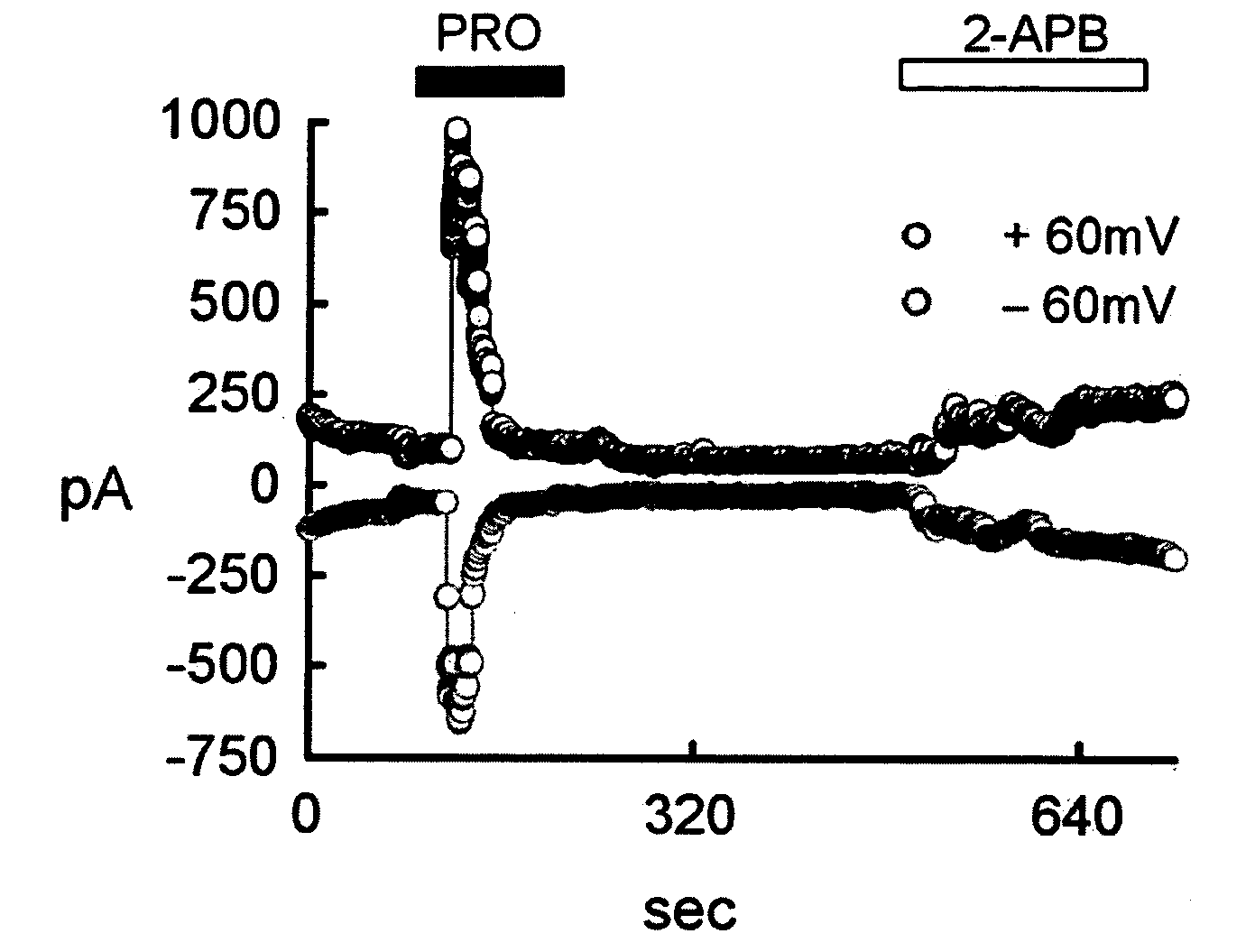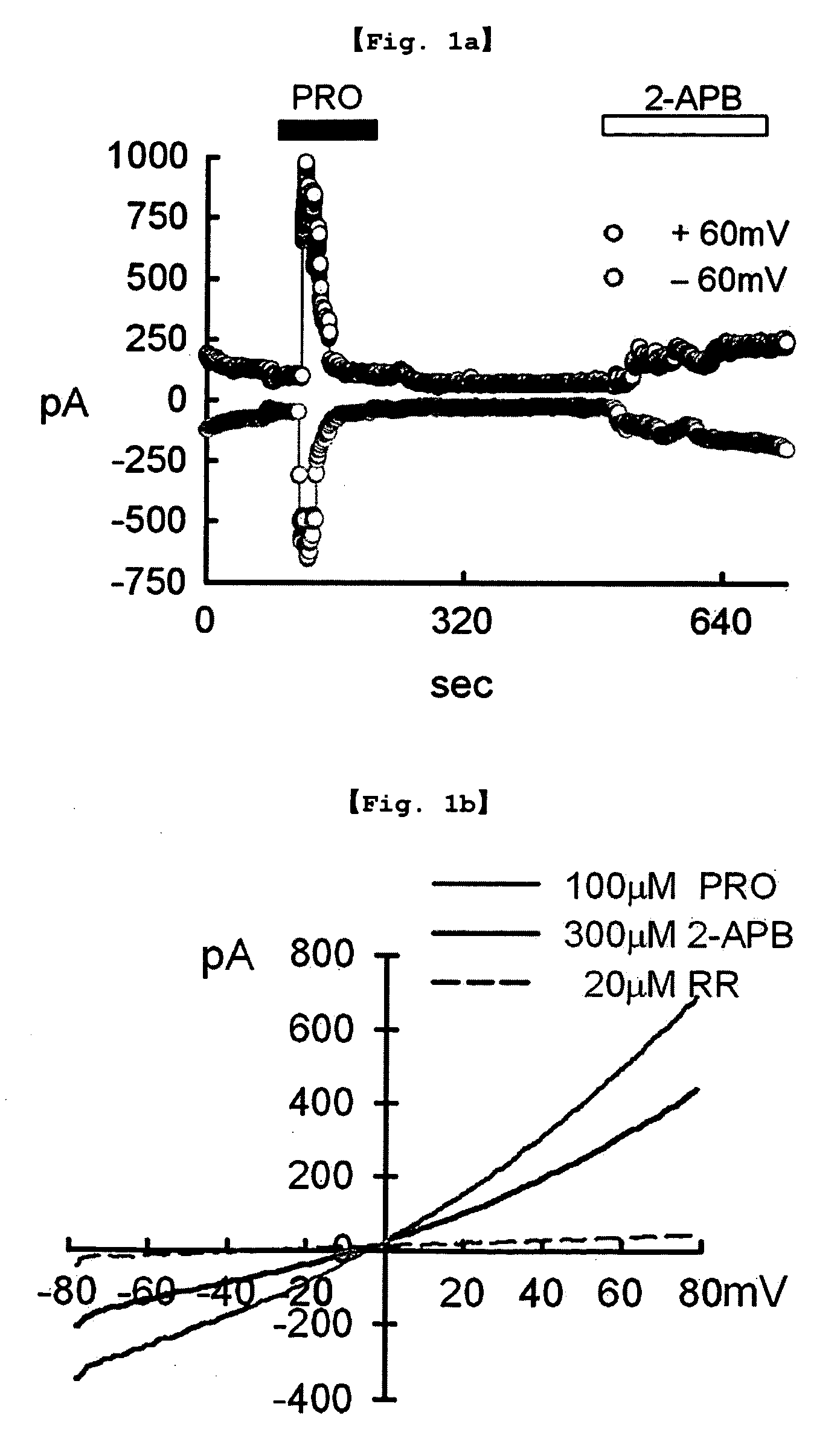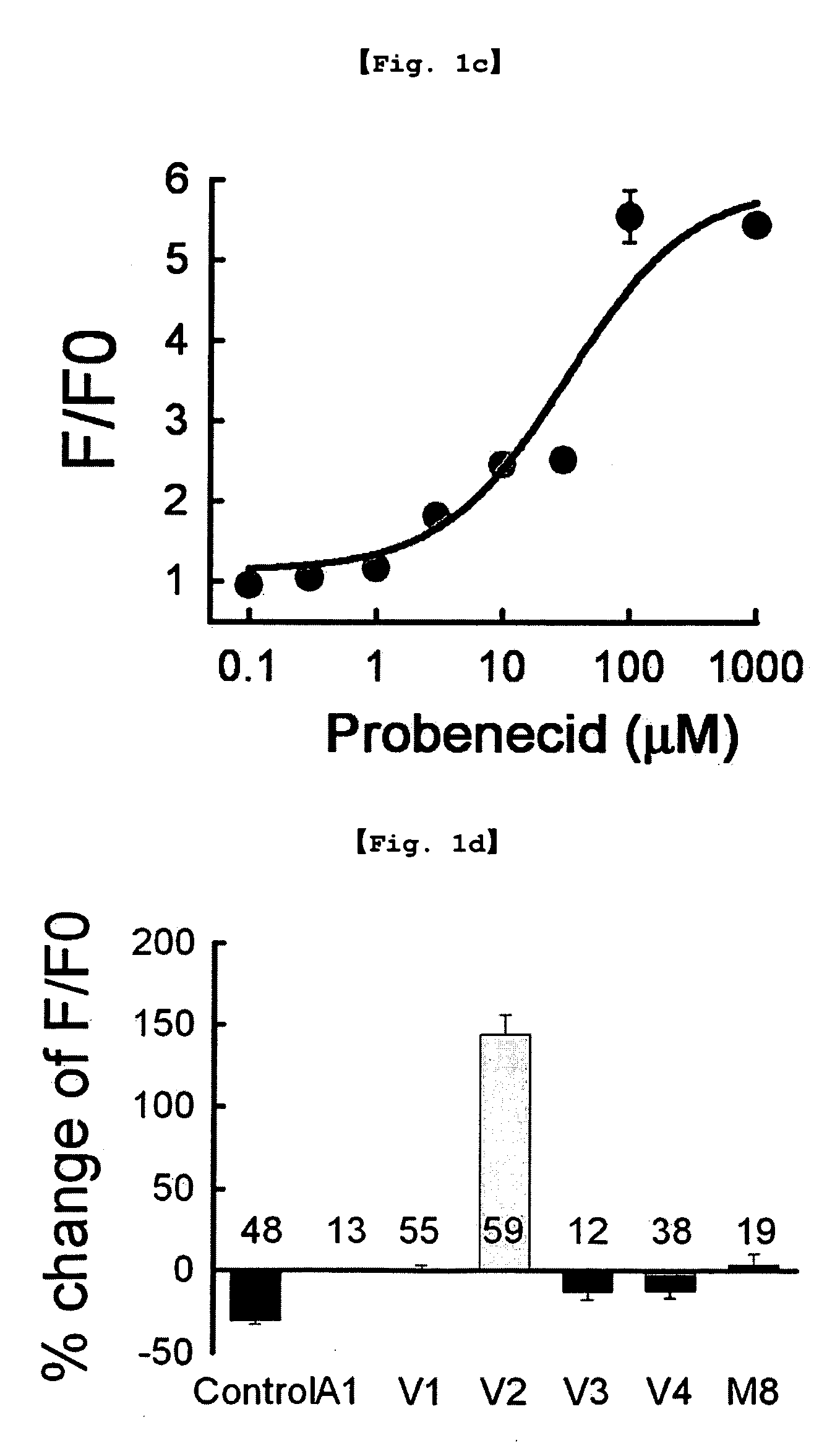Activator for Transient Receptor Potential Vanilloid 2 Comprising Probenecids
- Summary
- Abstract
- Description
- Claims
- Application Information
AI Technical Summary
Benefits of technology
Problems solved by technology
Method used
Image
Examples
example 2
Preparation of trigeminal neurons
[0103]Trigeminal ganglia were dissected out of decapitated adult ICR mice in cold PBS and treated with 1.5 mg / Ml of collagenase / dispase (Roche Diagnostics, USA) at 37° for 45 min, and then treated with 0.25% trypsin (Invitrogen, USA) for 15 min. The trigeminal neurons prepared thereby were then plated onto poly-L-lysine-coated coverslips in DMEM / F12 containing 10% FBS, 1% penicillin / streptomycin and 5 ng / Ml of 2.5S NGF (Invitrogen, USA), followed by culture in a CO2 incubator for 48-72 hours.
experimental example 1
Investigation of TRPV2 activation by probenecid or 2-APB (2-aminoethoxydiphenyl borate)
Treatment of Probenecid and 2-APB
[0104]The TRPV2 transfected cell line prepared in Example 1 was treated with 100 μM probenecid (Sigma-Aldrich, USA) and 300 μM 2-APB (2-aminoethoxydiphenyl borate; Cayman Chemical, USA), respectively. Stock solutions were made using water, DMSO or ethanol, and were diluted with test solutions before use.
Whole-Cell Voltage-Clamp Experiment
[0105]Whole-cell voltage-clamp recording, one of the patch-clamp techniques, was performed with the transfected cell line of Example according to the method of Bandel M, et al. (Neuron 41:849-857, 2004).
[0106]Particularly, the extracellular solution (140 mM NaCl, 5 mM KCl, 2 mM CaCl2, 1 mM MgCl2, 10 mM HEPES; titrated to pH 7.4 with NaOH) and the pipette solution (140 mM CsCl, 5 mM EGTA, 10 mM HEPES, 2.0 mM MgATP, 0.2 mM NaGTP; titrated to pH 7.2 with CsOH) were used. The potential was held at −60 mV for 250 ms, voltage-ramp pul...
experimental example 2
Investigation of block of TRPV2 activation by probenecid or 2-APB using ruthenium red
[0108]The TRPV2 transfected cell line prepared by the method of Example 1 was treated with 100 μM probenecid, 100 μM probenecid+20 μM ruthenium red (Sigma-Aldrich, USA) and 300 μM 2-APB, respectively. Stock solutions were made using water, DMSO or ethanol, and were diluted with test solutions before use. Then, whole-cell voltage-clamp recording was performed by the same manner as described in Experimental Example .
[0109]As a result, as shown in FIG. 1b, probenecid induced response shown in FIG. 1a was inhibited by ruthenium red, a general TRP pore blocker.
PUM
| Property | Measurement | Unit |
|---|---|---|
| Molar density | aaaaa | aaaaa |
| Molar density | aaaaa | aaaaa |
Abstract
Description
Claims
Application Information
 Login to View More
Login to View More - R&D
- Intellectual Property
- Life Sciences
- Materials
- Tech Scout
- Unparalleled Data Quality
- Higher Quality Content
- 60% Fewer Hallucinations
Browse by: Latest US Patents, China's latest patents, Technical Efficacy Thesaurus, Application Domain, Technology Topic, Popular Technical Reports.
© 2025 PatSnap. All rights reserved.Legal|Privacy policy|Modern Slavery Act Transparency Statement|Sitemap|About US| Contact US: help@patsnap.com



